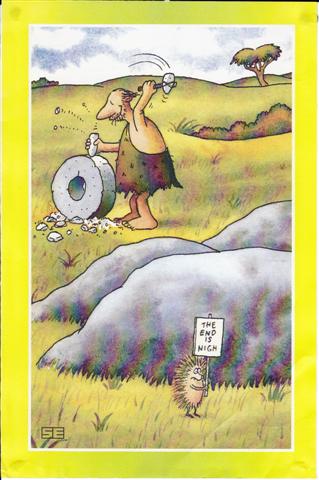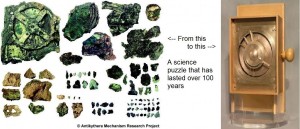Well done for the contributions you have made to our start-up activity in Knowledge Forum on three global problems. Many of you are doing a great job structuring well written posts which have created discussion and further questioning amongst your peers. Many of you are also trying hard to use the PQP approach and you will soon begin to see that this method of structuring answers is a useful tool to master, not just in Knowledge Forum. Remember that when proposing something that builds on the post you should provide evidence that supports your proposition. This can be a link supporting information, a news item, magazine article, video clip or another post.
To date you have been building knowledge on 3 global problems. Shortly we will move our focus closer to home – to your Project subjects. First, however we would like you to pull together what you have learned in each of these global views by posting a`Synthesis View’ as outlined below:
| `My Synthesis’ of Global Problem View Discussions 2013
Task: You are each to make to a New Note (titled `My Synthesis’) that pulls together the knowledge you have gained from our knowledge building community discussion on at least one the three Global Problem Views:
- Climate Change: Let the Science Speak!
- 21st Century Energy & Food Demands
- Global Wealth & 21st Century Science
We have added a new set of scaffolds entitled ‘My Synthesis’ to help you do this. Use some or all these scaffolds to help you.
In your synthesis we’d like you to outline:
-
What you have learned from these discussions
-
Highlight the most important idea(s) developed in this community
-
How the knowledge building discussion has impacted on your understanding of the topic of study.
Post your synthesis as a New Note titled `My Synthesis’ within the relevant `View’
This task should take you no more than 30 minutes.
Date Due: March 10th
Every `synthesis’ posted goes in draw for 1 of 5 I-Tunes/Warehouse vouchers! |
1. Time frame
- Global Views Synthesis: 25th February –10th March
- New Project A Views: March 11th to April 19th
- Project A Views Synthesis: April 20th – May 5th
The three Global views will remain open for the rest of the year so feel free to contribute any good ideas, resources, thoughts at any time. However, from March 11th we would like you to focus primarily on your Project A views (Maths, Physics, Geography or Zoology). We will shortly post a starting view for each of these project groups with the help of your project leaders. These you will individually be building on, the same way as you have been doing with the Global problem views. You are free to contribute to any of the project views. You will then have two weeks to you synthesize and consolidate the ideas and knowledge you have taken from community’s contributions.
We will then move onto your Project B group (Biochemistry/Genetics, Chemistry, Computer Science or Marine Science) and repeat the exercise with four views on these projects. The synthesis and consolidation phase for these projects will take place in the lead up to the Winter Science camp in July.
2. Commitment/expectations
As outlined in the January camp as part of OUASSA 2013 we expect you to be contributing to Knowledge Forum on a weekly to fortnightly basis. At least one post per week would be brilliant! Emily and I check Knowledge Forum very regularly and read your posts. Occaisionally we will post ourselves. However, our role is to guide the discussion and sometimes present useful links – not to provide `answers. You are the `knowledge builders’!
3. Trouble shooting
The login page for knowledge forum is at http://knowledgeforum1.otago.ac.nz/login
Remember to use the ‘Enhanced’ version of the software where possible and to select ‘OUASSA-2013’ from the Database drop-down box
If you are having any problems logging into Knowledge Forum, remembering your user name or password, or have any general questions, please contact us right away:
Email: ouassa@otago.ac.nz Ph: 03 3793496 steve.broni@otago.ac.nz Ph: 03 4799204
Also, please don’t forget to be checking the OUASSA Resource Page for useful resources: https://blogs.otago.ac.nz/ouassa/
We try to add to this page regularly with at least one useful link/resource. Please feel free to send me any useful links that you would recommend or you can post them yourselves on comments box.
Anything else we can help you with? Email us… we are here to support and help you reach your full science potential.
Kind regards – The OUASSA Team
Steve Broni (Director)
Emily Hall (Science Teaching Co-ordinator)
 The Christmas story has Mary and Joseph in Bethleham because of a census. The first record of an official census was far earlier than that, in Babylonia in 3800BC. Many years later, the first census in New Zealand occurred in 1851. For a few years, census was the responsibility of the provincial governments, so who was counted and when varied throughout the country. When the central government was formed in 1877, the census became a more organised affair and our first whole country census on the five year cycle we still follow today was held in 1881.
The Christmas story has Mary and Joseph in Bethleham because of a census. The first record of an official census was far earlier than that, in Babylonia in 3800BC. Many years later, the first census in New Zealand occurred in 1851. For a few years, census was the responsibility of the provincial governments, so who was counted and when varied throughout the country. When the central government was formed in 1877, the census became a more organised affair and our first whole country census on the five year cycle we still follow today was held in 1881.
















 I ran across these little Physics related videos the other day. Each one is only about a minute long so a nice little break. They are also aimed at presenting ideas rather than answering questions so could be a good way to stimulate a discussion or a starting point for more research. Cute and accessible for many year levels. Access the videos
I ran across these little Physics related videos the other day. Each one is only about a minute long so a nice little break. They are also aimed at presenting ideas rather than answering questions so could be a good way to stimulate a discussion or a starting point for more research. Cute and accessible for many year levels. Access the videos 






Recent Comments